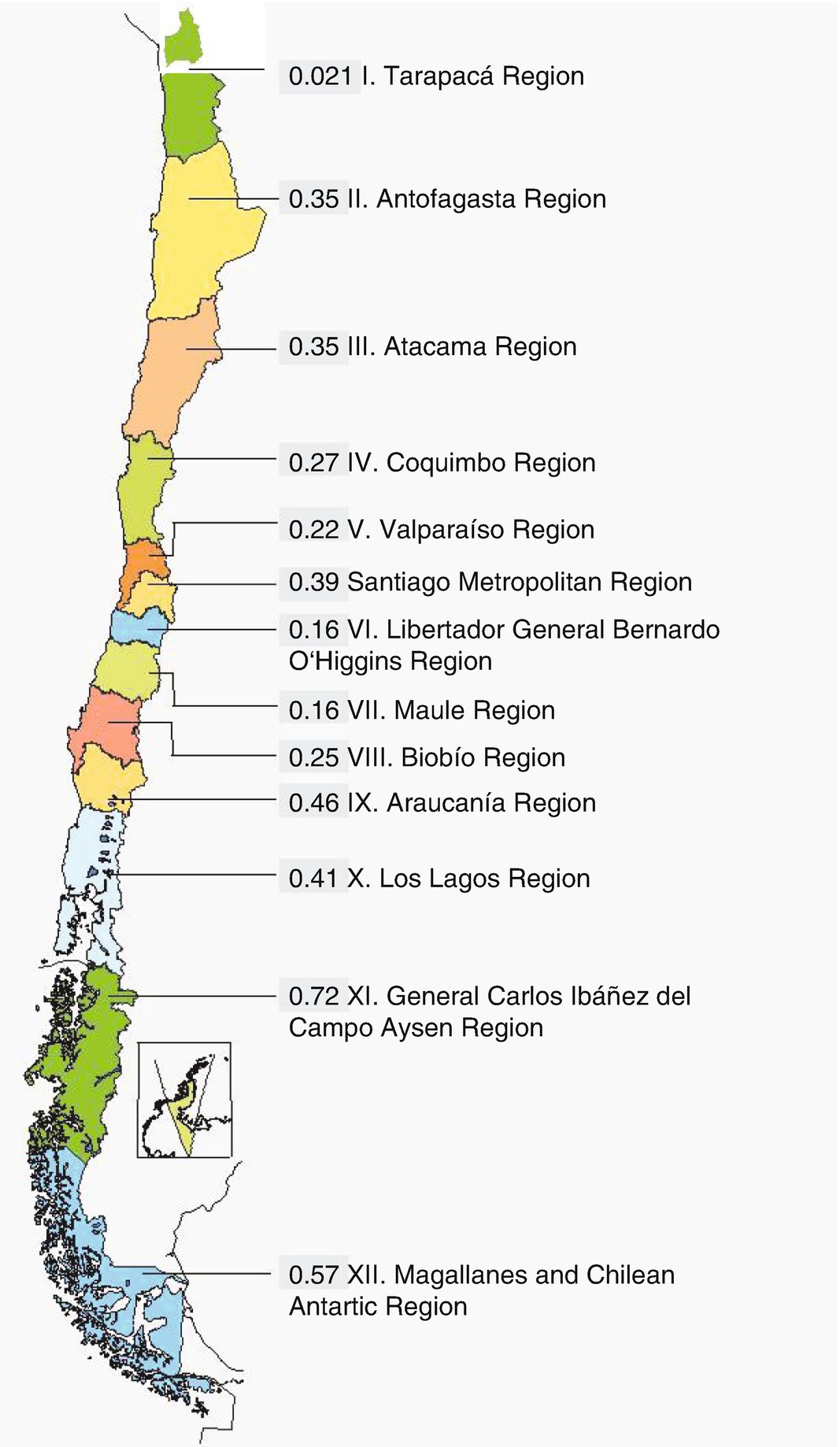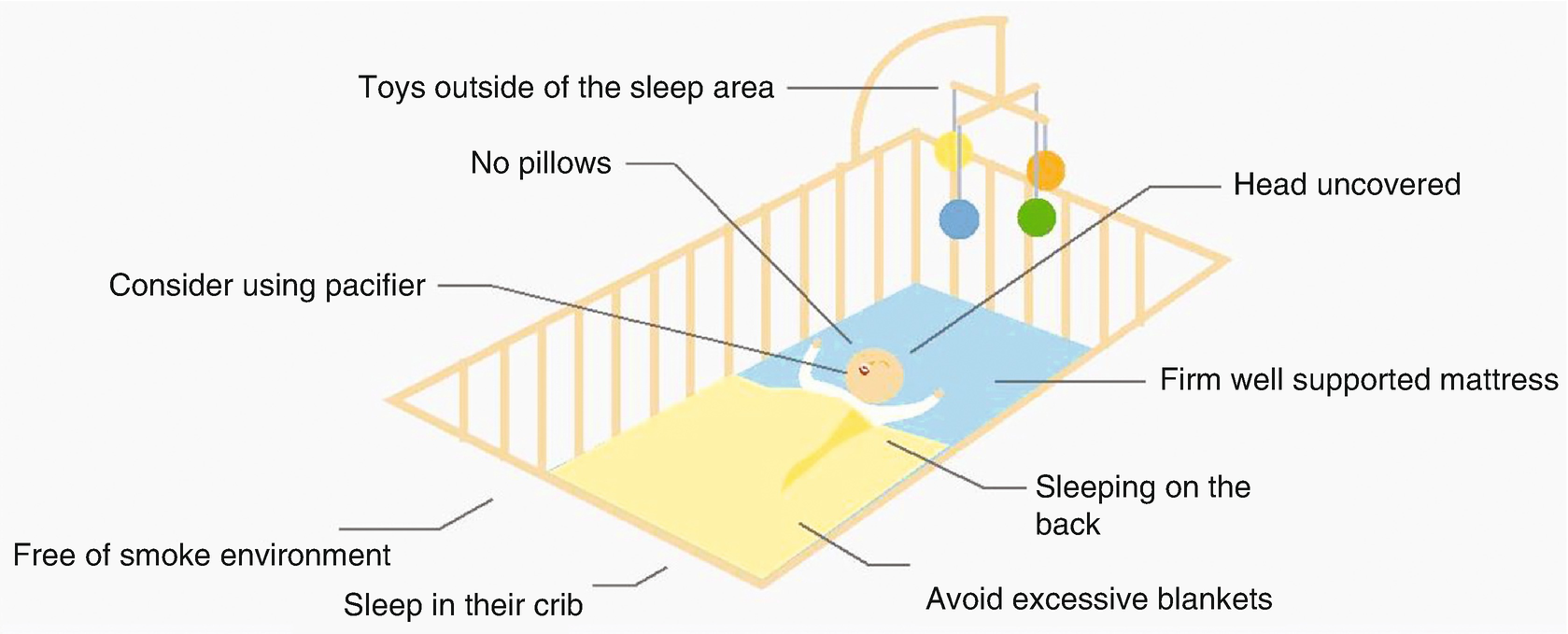Sudden infant death (SID) in Chile (1997–2009) (n = 1442): seasonal distribution of 1442 SID in Chile

Sudden infant death rate
Several studies, including two meta-analysis, have supported the use of a pacifier as a protective factor with an OR adjusted 0.39–0.48. The mechanism through which its use would reduce sudden death rate is not clear, and a reduction in the excitation threshold, or autonomic response during the sleep transition to awakening, have been proposed as explanations. In this age group, it has been confirmed that using a pacifier does not cause breastfeeding or odontological problems. The American Academy of Pediatrics recommends the use of the pacifier as a strategy to reduce the risk of SIDS, and it should be introduced once breastfeeding has been well established, after 2–4 weeks of age.
Maternal smoking increases the risk of SIDS up to 40 fold. Both prenatal and postnatal smoking have been associated. Besides this, there are studies relating in-home smoke of any family member with sudden death. This habit is one of the preventable factors most strongly related to the disease.
There is no current evidence relating sudden death to vaccines and immunizations. There are reports relating cases of diphtheria, tetanus, and pertussis vaccine to sudden death, although there is no information supporting this statement. A meta-analysis published in 2007 showed that immunization reduced the risk of SIDS in 46%.
The protective role of maternal breastfeeding has been discussed over the years, but the experts have still not issued a consensus. Some recent reports, including a meta-analysis in 2011, show a protective effect of maternal breastfeeding against SIDS, with an approximate reduction of 50% when the child is breastfed, and this effect would be greater when the child is exclusively breastfed. Physiological studies have shown that breastfed infants have a lower awakening threshold in comparison to their peers who received formula, which could support the argument of the protection of breastfeeding against sudden death. Other possible reasons for this protective effect include the prevention of infectious diseases and global immune benefits.
The association between sudden death and an apparent life-threatening event (ALTE) is still controversial. Although it is the main cause of death of children suffering from an ALTE, only 3% to 7% of infants who died of sudden death have had a previous ALTE episode. There is still not enough evidence sustaining such an association.
Prevention and Approach

Recommendations for “safe sleeping”
- 1.
Promote supine position for sleeping infants. An association between prone position and an increase of SIDS rate has been confirmed. After the massive introduction of the campaign “back to sleep,” a reduction in the rate of sudden infant death could be observed in the countries that applied it. It has been shown that sleeping in lateral position has increased the number of death cases caused by sudden death, and therefore it should not be recommended as an alternative.
- 2.
Avoid prone and decubitus lateral positions. As it has been previously pointed out, all other positions, with the exception of supine decubitus, are dangerous, and should be avoided. Prone and lateral position have shown a reduction in the micro-awakening thresholds.

Stay updated, free articles. Join our Telegram channel

Full access? Get Clinical Tree


